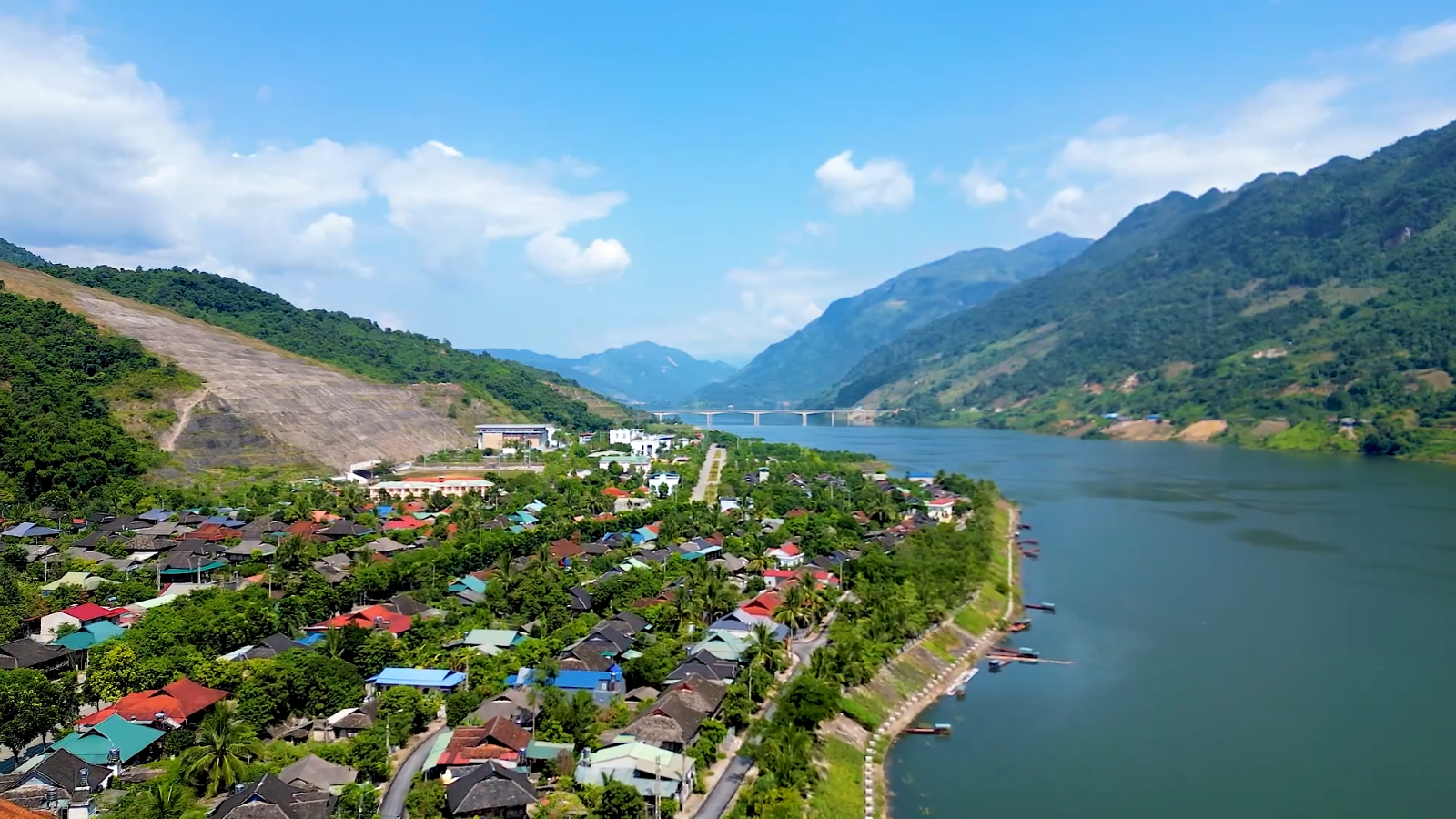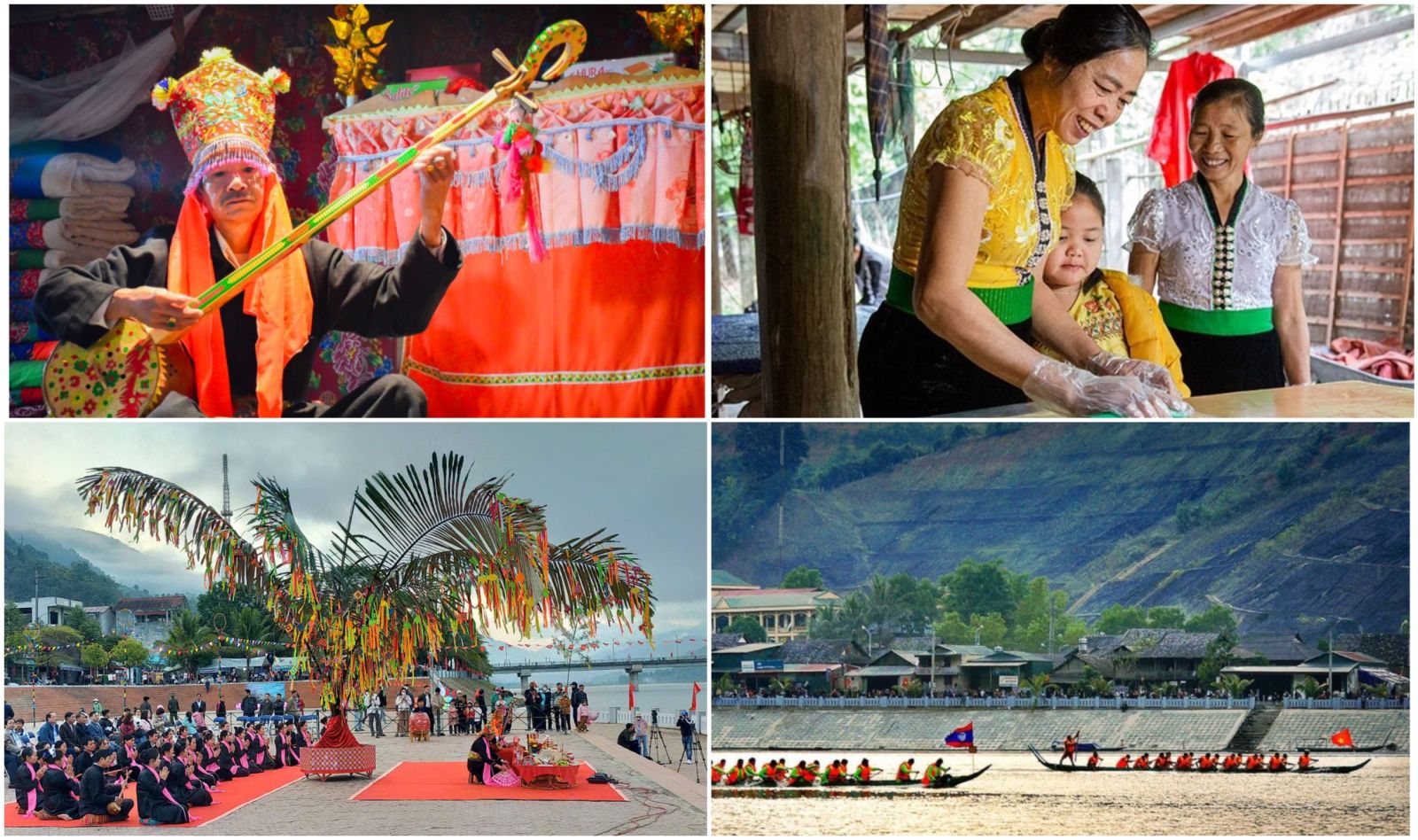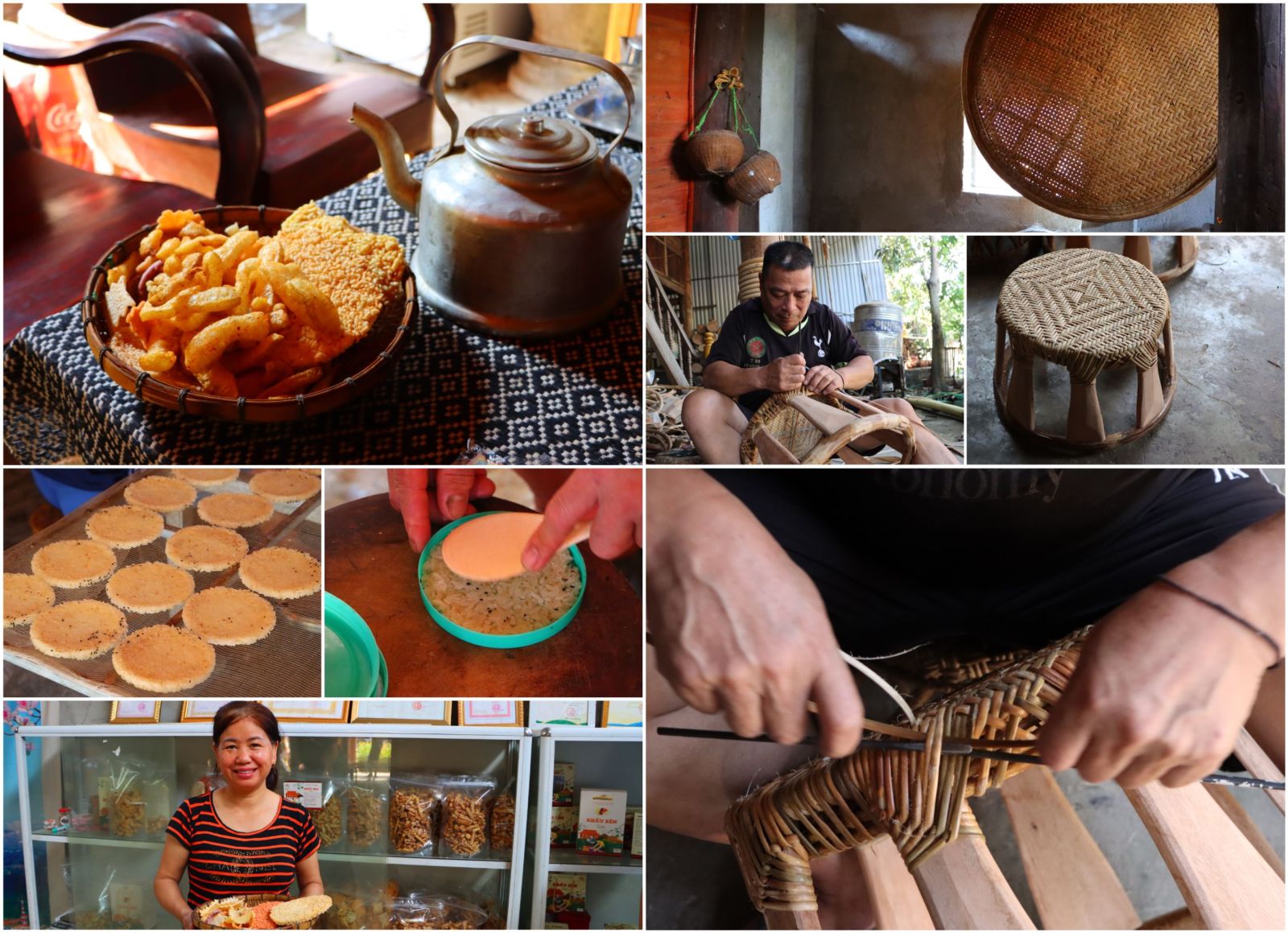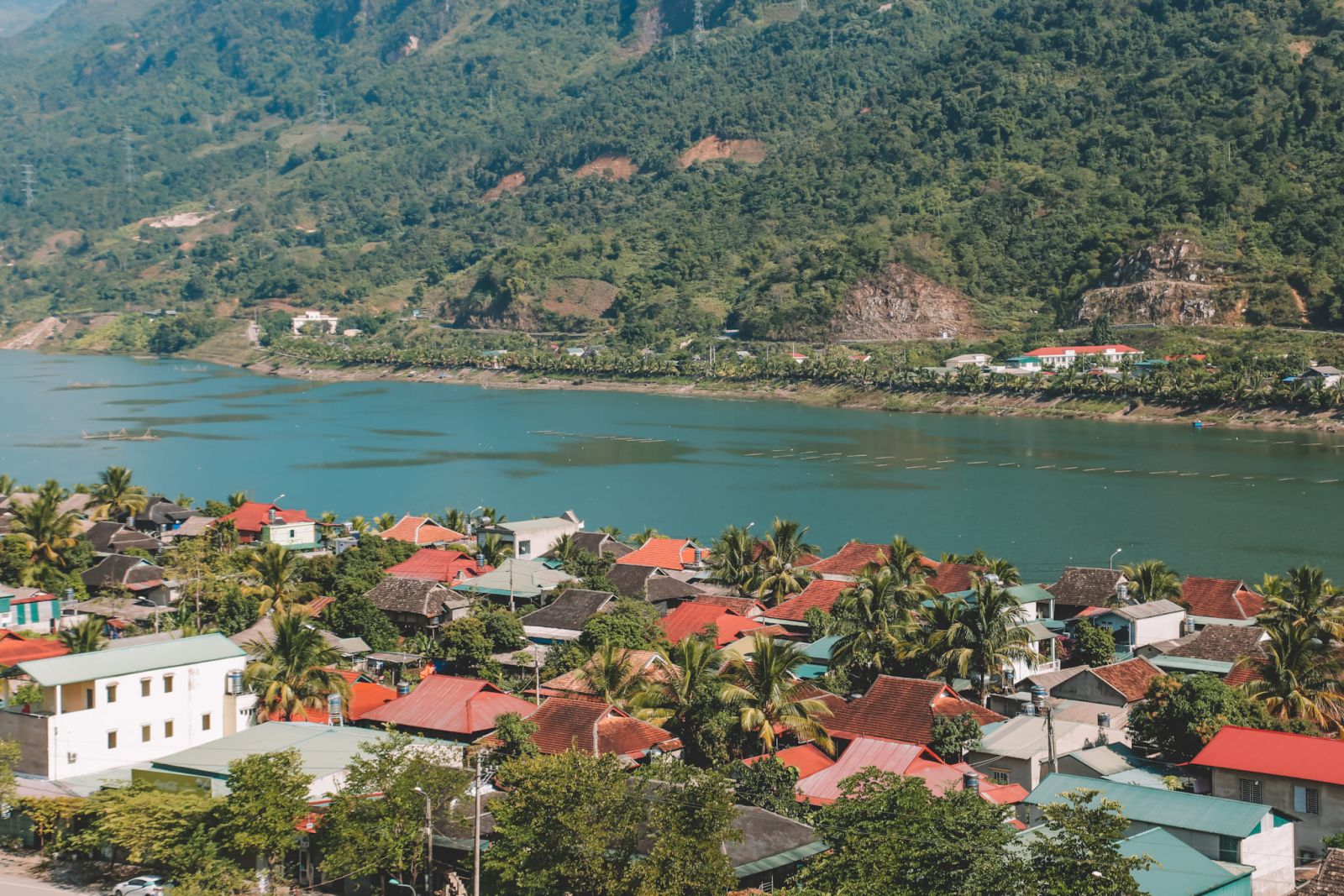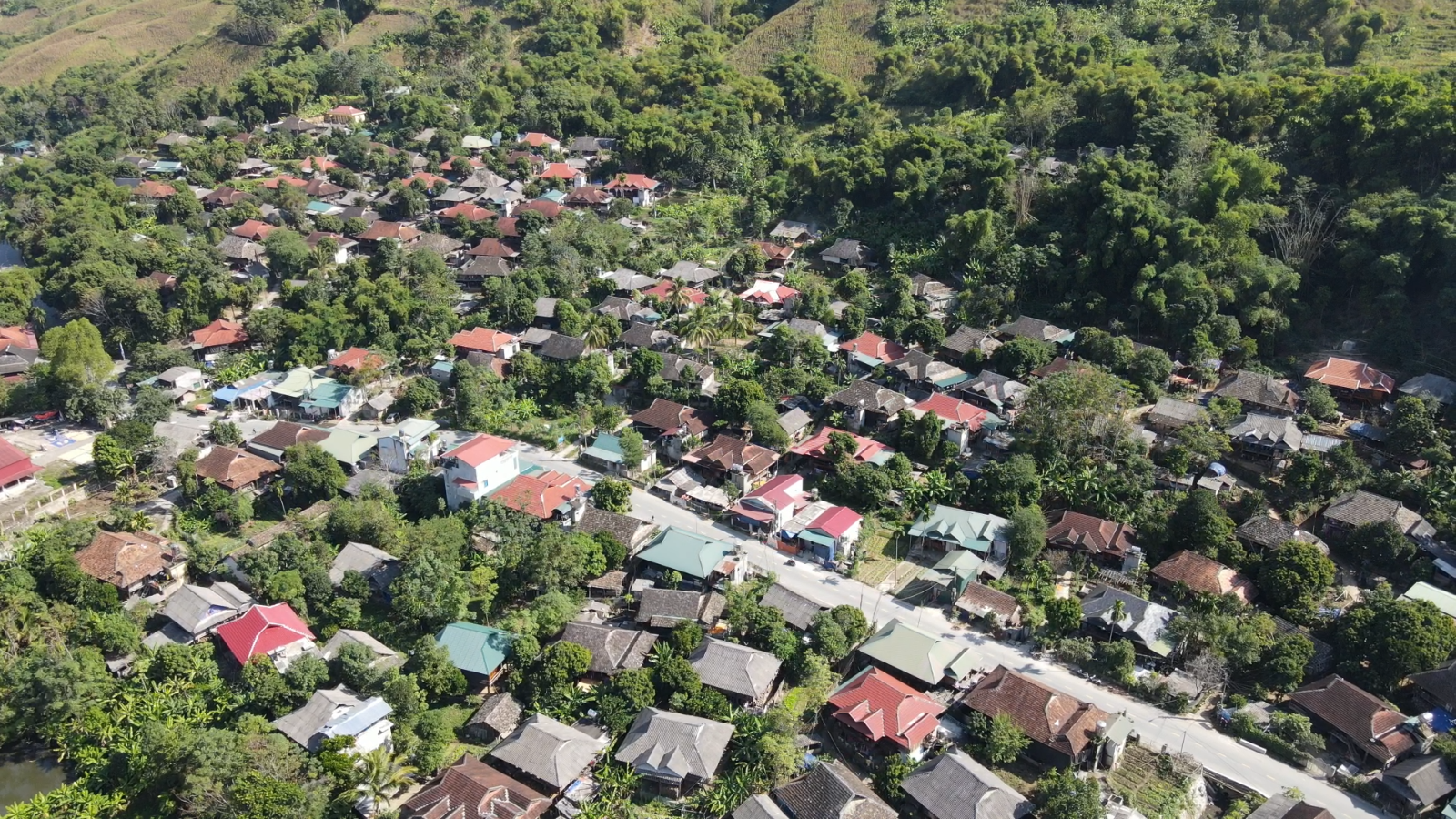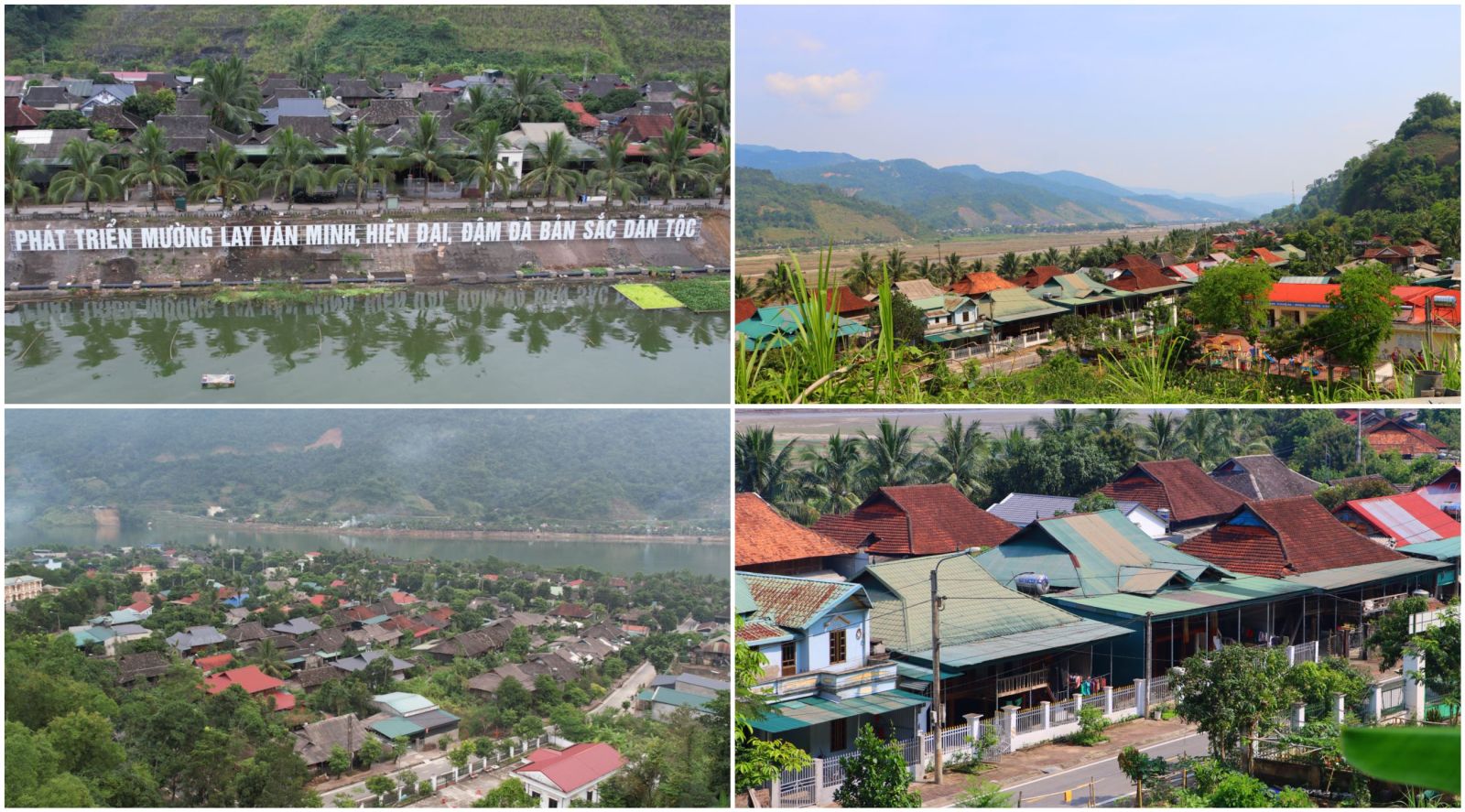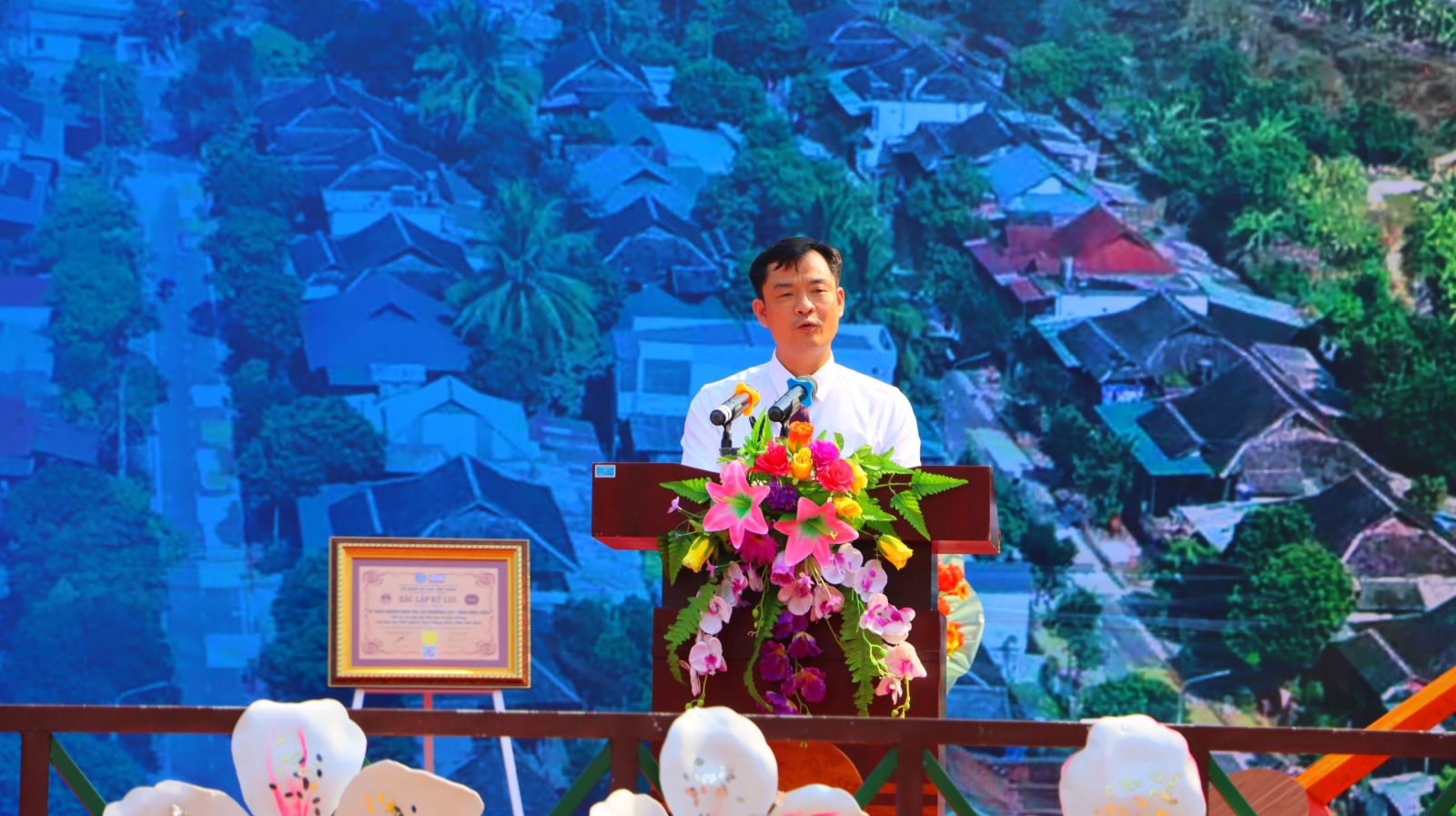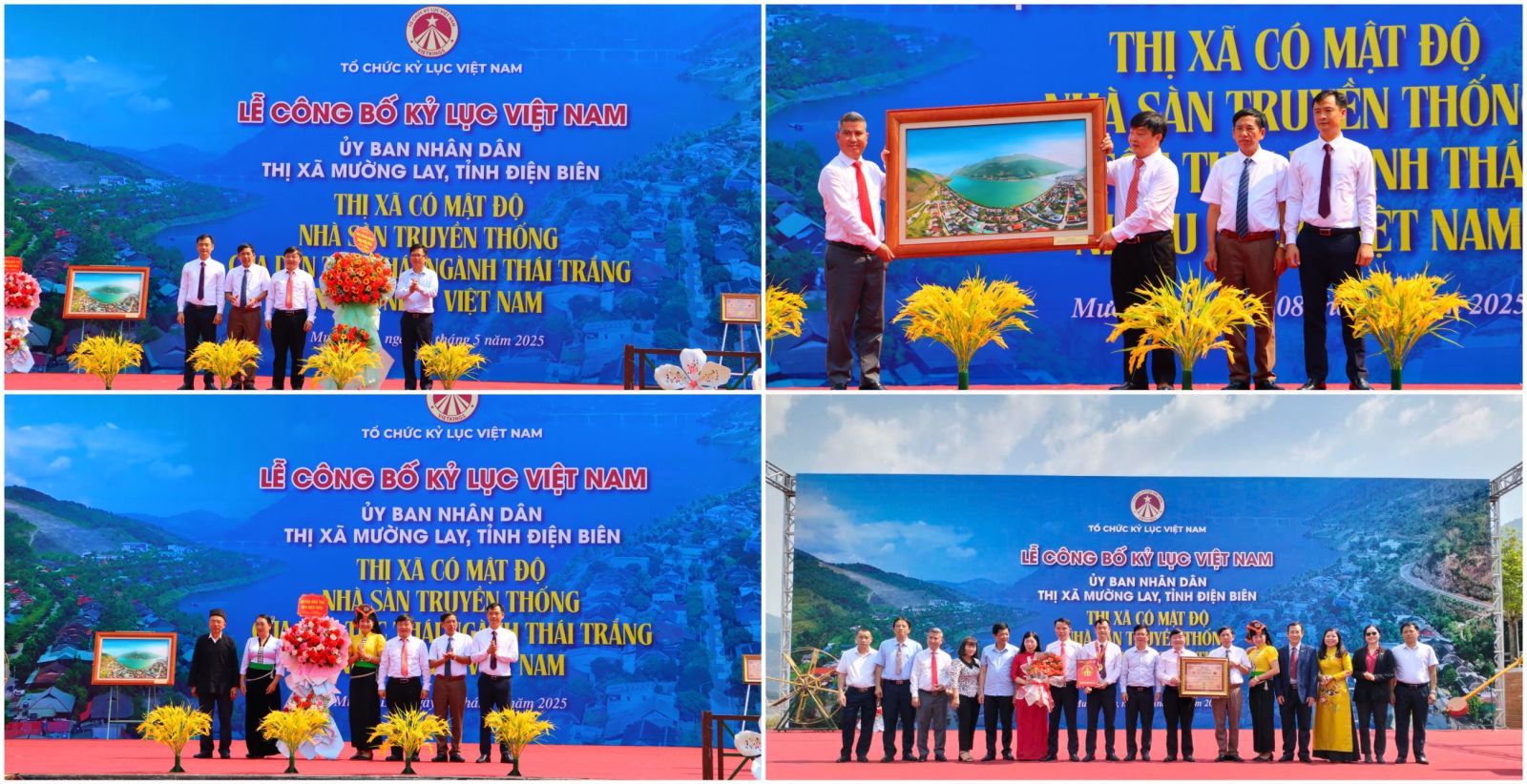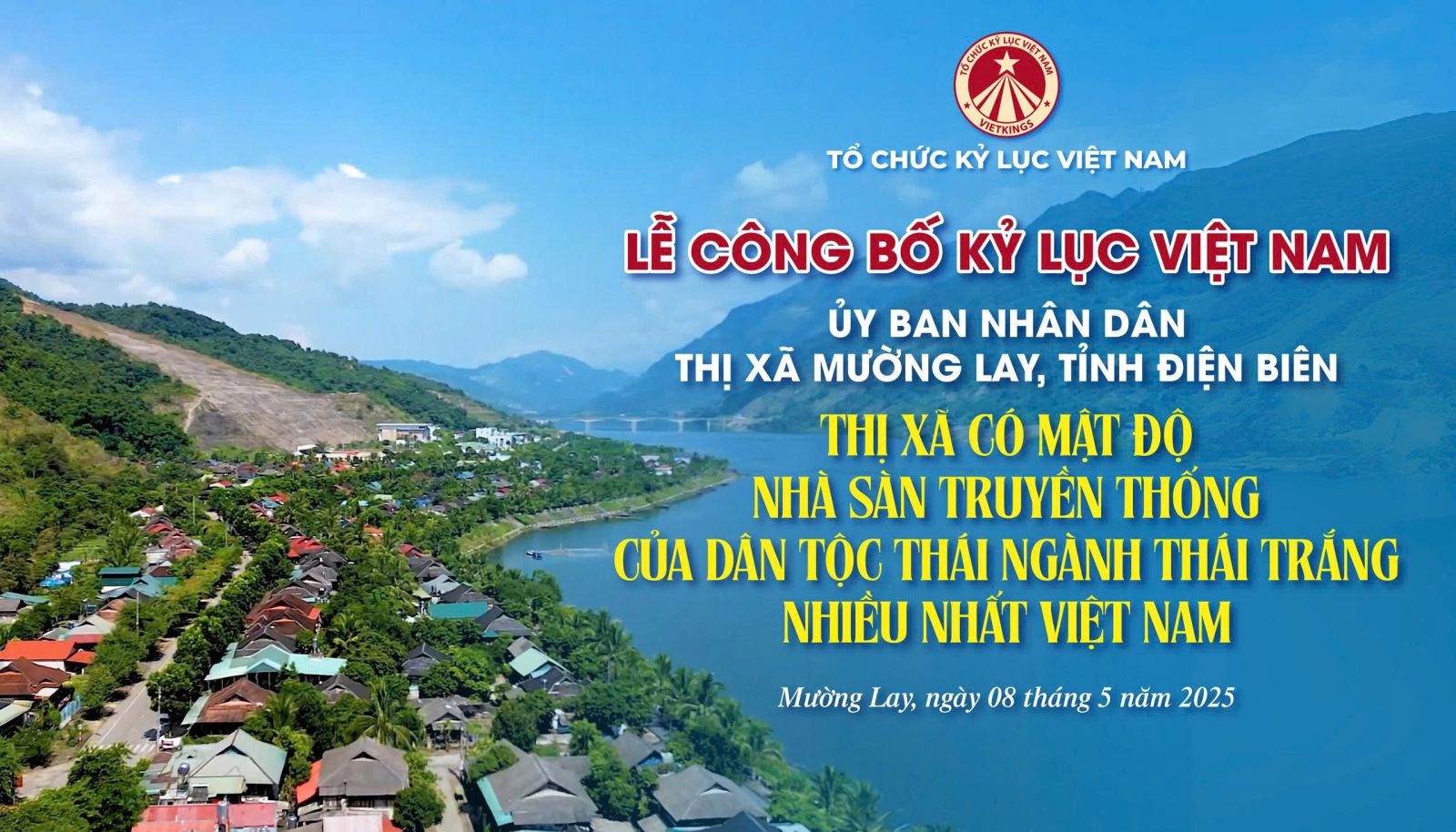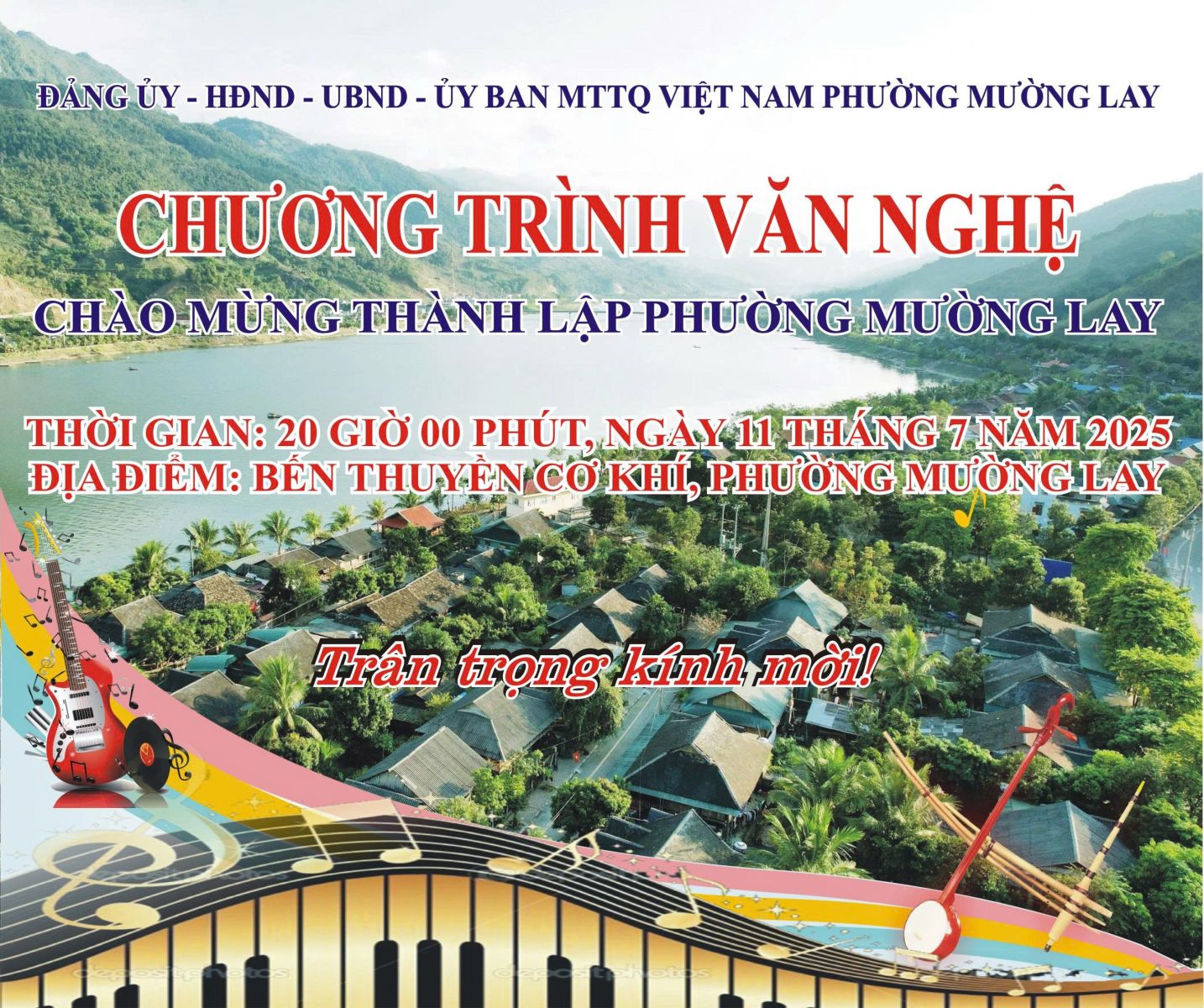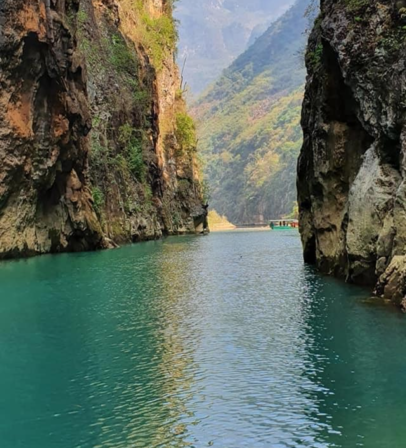Kyluc.vn - Muong Lay Town (Dien Bien Province) is known as the "Precious Gem" on the Northwest sky with a total natural area of 112.7 km², with the majority of the White Thai people living there. Coming to Muong Lay, visitors cannot help but be amazed by the streets of stilt houses located close together next to the hydroelectric reservoir. This is a cultural beauty, a traditional architectural beauty that has been preserved and conserved by the White Thai community in Muong Lay Town for generations.
Located in the North of Dien Bien province, Muong Lay town has a natural area of 112.7 km², about 96 km north of Dien Bien Phu city center, bordering Nam Nhun and Sin Ho districts (Lai Chau province) and Muong Cha district, Dien Bien province. The administrative boundaries of Muong Lay town include 02 wards and 01 commune, located in a narrow, long valley, at the intersection of the Da river, Nam Na river and Nam Lay stream. This is the home of 9 ethnic communities, especially the capital and cultural center of the Thai ethnic community of the White Thai branch. Currently, the Thai ethnic group in Muong Lay town accounts for the largest proportion, up to nearly 70% of the town's population.
.png)
Over the years, Muong Lay town has made constant efforts to preserve and promote the unique traditional cultural values of the Thai ethnic community of the White Thai branch in the area..
(8).jpg)
Unique cultural beauty in festivals of the local White Thai ethnic community (Photo: Synthesis)
The Thai ethnic community of the White Thai branch in the town is currently preserving national intangible cultural heritages such as: Then Kin Pang ceremony, Thai xoe art, folk knowledge of making Khau Xen cake and Chi Chop cake; the annual traditional swallow-tail boat racing festival and many other types of heritage and typical crafts.
(11).jpg)
Images at a facility making Khau Xen cakes and Chi Chop cakes in Ban Bac 2 and a household making rattan chairs in Na Nat village, Muong Lay town, Dien Bien province (Photo: VietKings)
Muong Lay town is not only known for its picturesque natural scenery but also for preserving one of the unique ethnic cultural treasures of the Northwest region: the traditional stilt house system of the Thai ethnic community of the White Thai branch, the soul of an ancient culture - a place that nurtures people, preserves customs, and creates an inexhaustible cultural flow.

The stilt houses with traditional architectural beauty and roofs covered with brown and black stones, typical of the areas along the Da River, have created unique structures of the White Thai community in Muong Lay town, Dien Bien province.
.png)
The difference between the White Thai stilt houses and the Black Thai stilt houses is that the roofs on the two gables of the house will be made in a flat square shape, not curved like a turtle shell like the Black Thai stilt houses.
(9).jpg)
Currently, the total number of Thai ethnic households of the White Thai branch with traditional stilt houses in the town is 1,192 households/3,198 households. Of which, stilt houses with black stone roofs: 253 households, corrugated iron roofs: 293 households, tile roofs: 355 households, roofs with other materials: 311 households. (Data provided by the Muong Lay Town Statistics Office - Dien Bien Statistics Office in Official Dispatch No. 226/CV-CCTK dated December 28, 2024, on statistics on the number of stilt houses of the Thai ethnic community - White Thai branch in Muong Lay town).
(9).jpg)
The delegation of Vietnam Record Leaders had a field trip to Muong Lay town to record information and documentary images about the density of stilt houses in the locality at many different stops (Photo: VietKings)
(9).jpg)
The White Thai stilt house is made of wood, with 02 stairs arranged in the front and back of the house, the front staircase will be the main staircase to enter the house, the back staircase is the secondary staircase and is located in the room near the kitchen to go up to the house. The traditional stilt house architecture has been around for a long time, hundreds of years now and has been passed down from generation to generation in the Thai ethnic community of the White Thai branch of Muong Lay. (Photo: VietKings)
%20%e2%80%93%20%c4%90%c3%a3%20s%e1%bb%ada.jpg)
Stilt houses are not just a place to live - but also a place to preserve the national soul, the heart of the village, the pride and indelible identity in the life of the White Thai people in the Northwest highlands. (Photo: VietKings)
In the context of strong cultural exchange between ethnic groups and regions as it is today, preserving and maintaining a large number of traditional stilt houses in the town also contributes to promoting the image of local culture, preserving and promoting the national cultural identity. This also reflects the efforts of local leaders to preserve and promote traditional and unique cultural values.
After a period of reviewing and evaluating the records, the Vietnam Records Organization (VietKings) officially recognized the Vietnam Record to the People's Committee of Muong Lay Town, Dien Bien Province with the content: "The town has the highest density of traditional stilt houses of the Thai ethnic community of the White Thai branch in Vietnam." The density at the time of setting the record was recorded as nearly 10.58 houses/km².
.JPG)
Representatives of VietKings leaders visited and took souvenir photos at the traditional stilt house located in the guest house of Muong Lay Town People's Committee (Photo: VietKings)
(8).jpg)
Vietnam Record Announcement Ceremony of Muong Lay Town People's Committee, Dien Bien Province (Photo: VietKings)
On the morning of May 8, 2025, the People's Committee of Muong Lay Town, Dien Bien Province solemnly held a ceremony to receive the Vietnam Record Certificate at the Mechanical Boat Wharf (in Muong Lay Town, Dien Bien Province) with the presence of the leaders of the Provincial Party Committee, People's Council, People's Committee, Vietnam Fatherland Front Committee of Dien Bien Province; The leaders of the Town Party Committee - People's Council - People's Committee of Muong Lay Town together with leaders of agencies, departments, unions and people. On the side of the Central Committee of the Vietnam Record Holders Association - Vietnam Record Organization (VietKings), there was the presence of: Mr. Duong Duy Lam Vien - General Secretary of the Central Committee of the Vietnam Record Holders Association, Director of the Vietnam Record Institute; Ms. Nguyen Thi Quynh Ngoc - Deputy Director of the Vietnam Record Institute, General Secretary of the Vietnam Record Organization and Ms. Tran Thu Phuong - Deputy General Secretary of the Vietnam Record Organization.

Mr. Chui Van Thanh, Member of the Standing Committee of the Town Party Committee, Vice Chairman of the Town People's Committee, announced the reason for the ceremony and coordinated the main activities of the ceremony. (Photo: VietKings)

Mr. Nguyen Dat Long, Member of the Standing Committee of the Town Party Committee, Acting Chairman of the People's Committee of Muong Lay Town, Dien Bien Province, represented the report on the process and results of establishing the Vietnamese Record (Photo: VietKings)

Ms. Nguyen Thi Quynh Ngoc - Deputy Director of Vietnam Records Institute, General Secretary of Vietnam Records Organization, representing VietKings to announce the decision to establish the Record to the unit (Photo: VietKings)

Mr. Duong Duy Lam Vien - General Secretary of the Vietnam Record Association, Director of the Vietnam Record Institute and Ms. Nguyen Thi Quynh Ngoc presented the Record to the Representative of the People's Committee of Muong Lay Town, Dien Bien Province (Photo: VietKings)
(9).jpg)
Delegates took a souvenir photo with representatives of the People's Committee of Muong Lay Town, Dien Bien Province (Photo: VietKings)

Mr. Pham Duc Toan, Member of the Provincial Party Standing Committee, Permanent Vice Chairman of Dien Bien Provincial People's Committee, delivered a congratulatory speech to the newly recognized record of Muong Lay Town People's Committee, Dien Bien Province (Photo: VietKings)
In particular, sharing at the ceremony, Mr. Pham Duc Toan, Member of the Provincial Party Standing Committee, Permanent Vice Chairman of the People's Committee of Dien Bien province, stated that the newly established record is an official recognition of the efforts of the Party Committee, government and people of Muong Lay town in preserving, promoting and conserving harmonious culture in the context of modernization and urbanization. This is the result of a process of building and resettling the housing system closely following the guidelines and plans for sustainable development in the locality for many years. He also emphasized that the next task is for local leaders to focus on plans to elevate the record, turning this characteristic into a potential for tourism development in many forms, improving the material and spiritual life of the people, enriching and beautifying the homeland and the Fatherland.

 VIE
VIE

